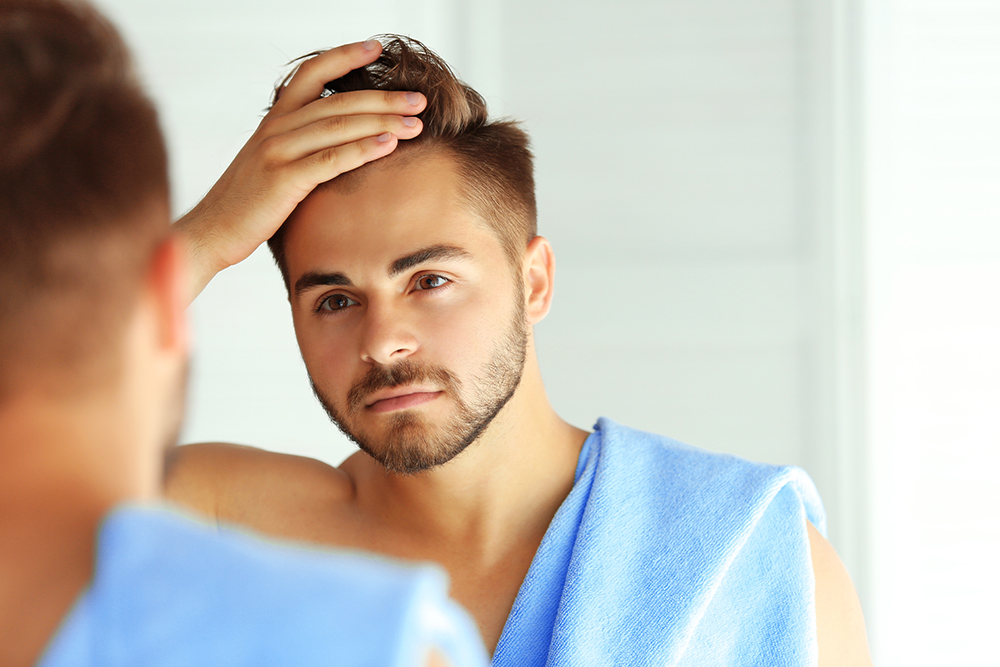Why Does Hairloss Happen?
Over time, usual hair movements, shampooing and brushing causes the hair root to loosen further. Eventually, the hair is shed. The shedding of around 50 to 150 hairs per day by this way is normal. By far the most common form of hair loss and hair thinning in man and women is determined by our genes and hormones. Also known as androgen-dependent, androgenic, or genetic hair loss. It is the largest single type of recognisable alopecia to affect both men and women.

In Men:
98% of male pattern baldness is result of androgenetic alopecia, characterized by hair receding from the lateral sides of the forehead (known as a “receding hairline”) and/or a thinning crown (balding to the area known as the ‘vertex’). Both hair recession and hair thinning become more pronounced until they eventually meet, leaving a horseshoe-shaped ring of hair around the back of the head. Apart from androgenetic alopecia, there is also Telogen effluvium and non pattern hair loss. The former is hair loss that is usually caused by the likes of medication, diet patterns, stress, and thyroid abnormalities. The latter relates to any random and rare hair loss experienced, such as scarring alopecia and compulsive hair pulling (also known as trichotillomania).

In Women:
Hair loss in women can be related to genetics, hormones and age. The hair loss patterns in women is summed up via the three types – Androgenetic alopecia, Telogen effluvium, and non-pattern hair loss. Androgenetic alopecia is the most common cause of hair loss in women, and the pattern of hair loss in this case, is less predictable in women than it is men. Telogen effluvium can arise from many causes, including medication use, dietary tendencies, and stress. The source of stress resulting in hair loss can be events such as childbirth, pregnancy termination, starting or stopping the use of oral contraceptive drugs, premenopausal period, drugs used in diet regimens, some emotional stresses etc. These events will cause the hair to stay in the resting phase for about only 3 months. Then, a large amount of hair will shed. There are all of the other rarer types of hair loss, which fall into the ‘non pattern hair loss category’.
Genes
Hair loss due to androgenetic alopecia occurs only if a person has a specific genetic code in his or her chromosomes. This code responsible for baldness is carried by a single gene or a group of genes and may be inherited from either mother or father side.
Hormones
Several types of androgens can affect a single hair follicle and different types of hair follicles in different regions of the skin. Respond to the same androgen can be in different ways. For example, hairs located on the armpit respond to androgens by growing, whereas hairs in the scalp fall out in response to them.
Stress
In many cases of hair loss the root of the problem is stress. Stress has always been with us and is not a new phenomenon. Owing to increased awareness through medical advances and the way that the condition is reported in the media, we now have a better understanding of the debilitating effect it can have on people.
Ageing
As people get older, some hairs randomly begin to shrink both ways, in length and diameter. This process is called miniaturization. As a result, miniaturized hairs will shed and therefore number of follicular units will gradually decrease.
